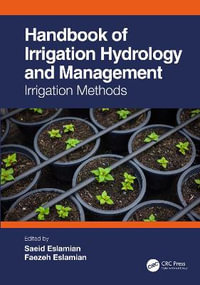"The most comprehensive and in-depth presentation of all aspects of HV engineering. ... The rigor and thoroughness with which the different topics are presented in the book reflect the vast experience of the authors and the significant contributions they have made to HV engineering."
-P. Sarma Maruvada, from IEEE Power and Energy Magazine, November/December 2015
"The best part of this book is that it contains numerous experimental results gathered from many references over the past two decades that pertain to high voltage breakdown and related phenomena. It is very convenient to have all this type of data in one handy reference book. Power engineers and those who design power distribution systems with regard to the power components will find this book useful in designing such systems."
-John J. Shea, Eaton Corporation, Moon Township, Pennsylvania, USA, from IEEE Electrical Insulation Magazine, May/June 2015
"High Voltage Engineering condenses many insights from the authors' combined 100 years' experience into only 773 pages. Calculation of electric fields describes some specific examples, such as Rogowski and Bruce profile electrodes, that can be used to ensure that practitioners understand their sophisticated software in a cylindrically symmetric problem before using it in 3-D. There is extensive treatment of statistics for high voltage testing as well. Inside this chapter, I found a nice discussion on the minimum number of tests (9) and also some new insight into the relationship between 1-minute and 30-minute withstand test results. The extensive work on electrical breakdown of gases is the best place to find the currents associated with various positive and negative corona modes. The treatment of long air gap breakdown is succinct and relies on the close agreement between Dr. Rizk's continuous leader inception model and test data in the range of 2 to 20m. A comparison of the models for correcting for absolute humidity in the range of 5 to 15 g/m3 highlights another advantage of Rizk's physical approach. This model is also highlighted in the treatment of lightning attachment, considering the 100m 'final jump' from leader to grounded structure as a class of flashover problem. In chapter 10, I found a new data point for the ratio of non-soluble deposit density (NSDD) to equivalent salt deposit density (ESDD) of about 5:1, 18% ESDD by weight. I also found a satisfactory explanation for a point that has always bothered me. Dimensional analysis suggests a linear relation of ESDD to wind speed and exposure time, but a velocity-cubed relationship was found near the sea. The answer is that the density of salt particles is proportional to the square of wind speed. The important role of ac re-ignition in the contamination flashover process is clearly identified. Dielectric recovery across dry bands was one of Rizk's contributions from 43 years ago, but this aspect is still missed when researchers use dc models to fit ac test results. I also enjoyed a practical focus in the section on high voltage testing and measuring techniques related to the currents and voltages induced in signal cables as well as the effect of large HV divider surge impedance. Congratulations to Drs. Rizk and Trinh on their impressive book."
-Dr. William A. Chisholm, from INMR Magazine
























